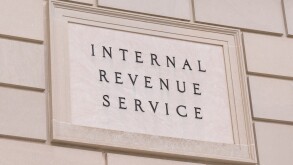The assessed value (Portuguese acronym: VPT) of buildings is determined in accordance with the Municipal Property Tax (IMI) Code’s standard formula, which incorporates six criteria specifically designed to evaluate urban buildings: average cost of construction per square meter (Vc); surface area (A); occupancy coefficient (Ca); location coefficient (Cl); quality and comfort coefficient; and (Cq) age coefficient (Cv).
The act provides a different formula to calculate the VPT of building plots: “the assessed value of building plots shall be the sum of the value of the buildable area, namely the area within the perimeter where the building will be built, measured by the outside part, and the value of the land adjacent to the buildable area”.
According to the law, the value of the buildable area could represent between 15% and 45% of the value of the licensed or planned buildings, after taking into account existing accesses, social facilities nearby, public transport offer, and whether the plot is considered prime property. As the location coefficient (Cl) in the standard VPT calculation formula varies in accordance with these exact same parameters, Portuguese higher courts have concluded that the standard VPT formula coefficients should not apply when calculating the VPT of building plots to prevent applying by analogy a formula specifically designed for buildings. The courts have therefore understood that the letter of the law does not allow applying by analogy to the evaluation of building plots an evaluation formula specifically designed for built property. This would actually breach the principle of legality, since the analogy is expressly prohibited in tax matters.
Practical application
Recent Portuguese case law has ruled out the application of the location coefficient (Cl) when calculating the VPT of building plots to prevent double taxation, as this coefficient is already included in the calculation of the percentage used to determine the value of the buildable area.
Using the location coefficient both in the calculation of the buildable area value and in the evaluation of the building plot would be tantamount to double taxation, as the same reality would influence the relevant VPT twice.
If the Cl is set aside in the application of the formula, the VPT of the plots could drop significantly (particularly considering that the Cl can reach 3.5%).
Taxpayers owning building plots should review the VPT of their plots assigned by the Portuguese tax authorities to see if it has been properly determined and weigh the pros and cons of requesting a new evaluation.
Requesting a new evaluation based on an error in the application of the legal evaluation criteria, namely the application of the Cl twice, could bring about a very significant reduction of the VPT and of the taxes calculated based on the VPT, that is to say, IMI and additional to IMI, but it could also trigger the re-evaluation of all criteria included in the determination of a plot’s VPT, something that may not always be in the taxpayer’s best interest. Taxpayers would be well advised to weigh the potential impact of a VPT re-evaluation carefully before proceeding.
Rita Magalhães
T: +351 21 311 3485
E: ram@vda.pt
Bárbara Miragaia
T: +351 21 311 3400
E: bam@vda.pt













